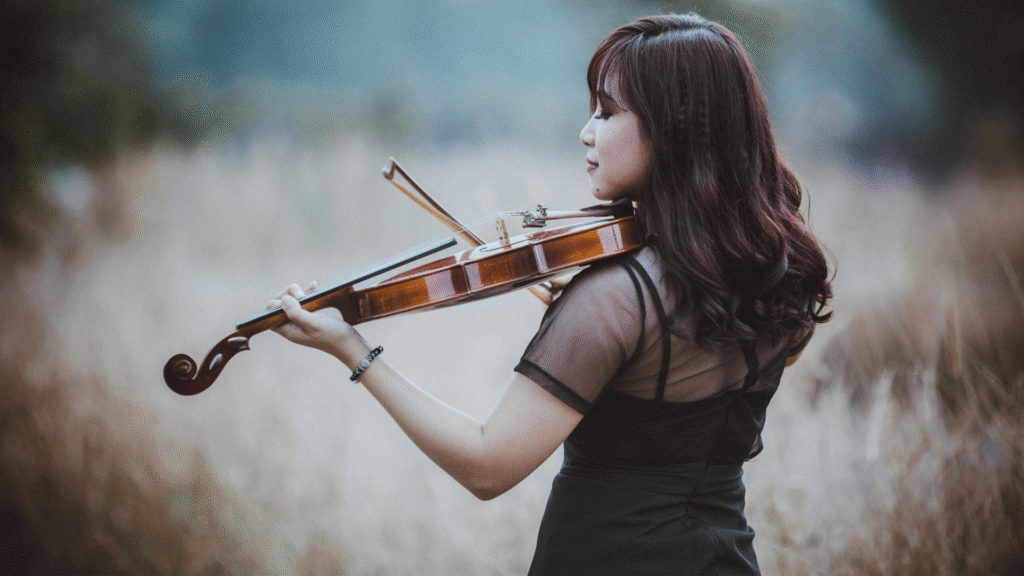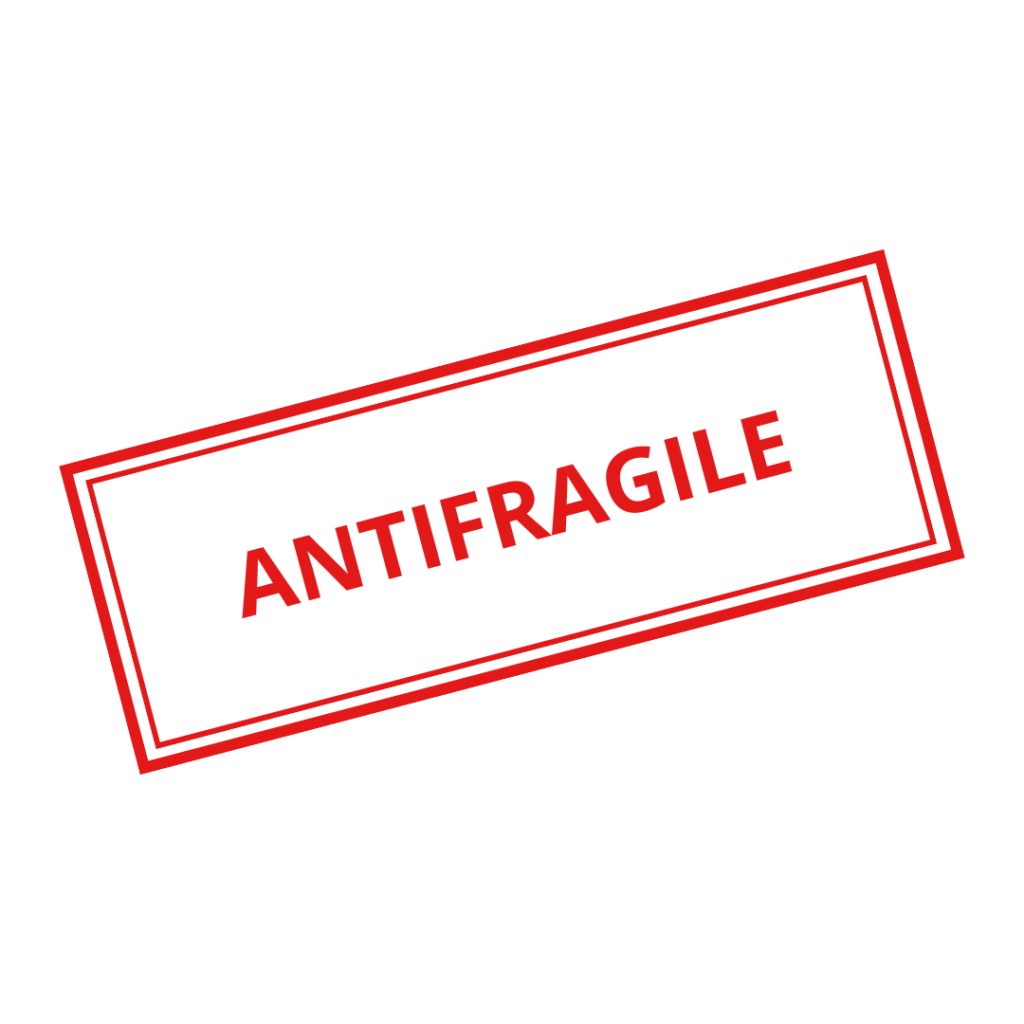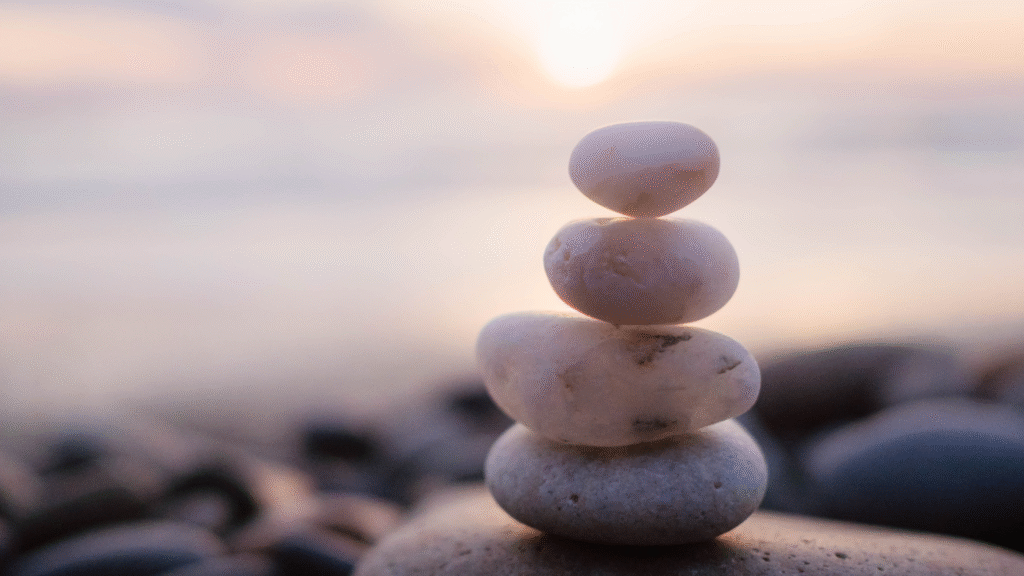“Music gives soul to the universe, wings to the mind, flight to the imagination, and charm and gaiety to life and to everything.” – Plato
Music has been part of my story for as long as I can remember. As a child, I sang songs of prayer at family gatherings. Later, I learned the violin, the piano, and studied voice formally. Over the years, music has been a companion, a language, and a lifeline. As I pondered this, it became clear that my next experiment was to understand how to enter the flow state through music.
Recently, when my son began violin lessons, I bought my violin out again — almost on instinct – after years of it being packed away. As soon as I drew the bow across the strings, something awakened. That resonance, that vibration — it stirred an old joy, a memory of what it feels like to lose yourself in sound.
And so began my next flow experiment: to relearn the violin not as a student chasing perfection, but as an explorer seeking immersion.
Key Concepts Preview
In this post, you’ll explore:
How music can unlock the flow state — where focus deepens, time disappears, and learning feels effortless.
Mindful violin practice as a path to presence — using breath, sound, and awareness to turn discipline into joy.
The art of learning as an adult — breaking complex skills into manageable steps that reduce overwhelm and accelerate progress.
How creative practice builds antifragility — transforming mistakes into feedback and flow into a lifelong growth habit.
The Experiment: Can Music Unlock Flow?
In this experiment, I set out to explore how learning a new violin piece could become more than practice — how it could open a doorway into flow, that magical state where action and awareness merge, and time seems to disappear.
My hypothesis:
If I focus on immersion rather than outcome — matching challenge to skill, using flow triggers like ritual, clear goals, and feedback — I’ll learn more effectively, and more importantly, access the joy of flow more consistently.
Setting the Stage for Flow
To create the right conditions, I designed a small ritual and structure around my practice:
Environment: A quiet space, free of distractions — no phone, no background noise.
Goal: Learn Violin Concerto in B Minor (Allegro Moderato) by Oscar Rieding and play it from memory, with feeling.
Feedback: Immediate and undeniable. A wrong note resonates differently; the ear knows.
Challenge-to-Skill Balance: Adjusting difficulty so it felt engaging, not overwhelming.
Days 1–3: Foundation — From Effort to Awareness
To begin, I created a ritual to cue my mind into focus. I’d listen to Itzhak Perlman’s recording of the concerto, set my violin on the table, and prepare the bow with rosin — a small act of reverence before playing.
Then came scales, stretches, and slow sight-reading. My fingers, stiff from years of neglect, protested. But as the tones began to flow, I felt moments of deep absorption — a chill at the sound of a precise high B, a reminder of the emotional power of music.
I noticed something subtle: when I stopped chasing perfection and simply listened, I felt complete. Those few minutes of connection filled my day with quiet satisfaction.
Lesson: Find that thing you love and give it your full presence, even briefly. That small act of immersion can transform your energy for the rest of the day.
Days 4–6: Immersion — Breaking Learning Into Flow States
Flow began to take shape. I divided the concerto into three sections, practicing one each day. I focused on short phrases, aligning bow strokes with my breath, connecting sound and body.
Time slipped away. I entered what psychologist Mihaly Csikszentmihalyi calls the autotelic experience — doing something purely for its own sake.
As an adult, playing music felt profoundly different. There was no teacher to impress or recital to prepare for — only the joy of rediscovering an old part of myself. When I was a teenager, practice sometimes felt like a chore. Now, it felt like freedom.
Learning: Flow deepens when body, breath, and attention move in harmony. Breaking learning into small, focused sections reduces overwhelm and sharpens presence — allowing skill and joy to unfold naturally.
Days 7–9: Expansion — Learning As Presence
By now, half the piece was memorized. I could close my eyes and play sections from memory, feeling rather than thinking.
This was the heart of flow — that seamless movement where your body seems to know what to do before your mind catches up. I stopped forcing the bow and let it glide. The music began to breathe.
There was feedback in every sound, but no frustration. Mistakes became information, not failure. I felt lightness and grace. Afterwards, I was grateful to have experienced the feeling of music.
Lesson: True learning happens when you let go of outcomes. Focusing on the bliss of the process — rather than achieving a perfect performance — not only feels more rewarding but also leads to deeper, higher-quality growth.
Day 10: Integration — Carrying Flow Beyond Music
On the final day, I played through the full piece. Then I closed my eyes and replayed it in my mind, not to judge, but to feel.
Later, as I cooked dinner, I found myself humming and moving with the same rhythm and presence I’d cultivated in practice. The simple act of chopping vegetables felt smoother, more grounded. Flow, it turns out, isn’t confined to music — it’s a way of being.
When we learn to listen deeply, breathe with intention, and balance challenge with skill, we can enter flow anywhere: writing, walking, working, or simply living.
Reflection — What the Violin Taught Me About Flow and Antifragility
This experiment wasn’t just about playing the violin again — it was about returning to presence.
Music reminded me how to listen, how to breathe, how to let go of self-consciousness. It showed me that flow isn’t about perfection, but about full engagement with the moment in front of you. Finding the balance between challenge and skill in an activity I thoroughly enjoyed made the experience intrinsically rewarding, motivating me to continue learning and progressing.
As I continue my journey toward building an antifragile life — one that grows stronger through challenge — music will remain one of my most powerful teachers.
When you reconnect with something you love, not to achieve, but to be with it, you create space for flow. And that’s where self-knowledge and joy truly begin.
Bringing It Home: Flow, Music, and Everyday Life
If this experiment resonated with you, you might be wondering how to bring flow into your own creative or learning practice. And while this experiment focused on the violin, the lessons about flow, presence, and mindful practice apply to any skill or challenge. Whether you’re learning a language, a new sport, or tackling a professional project, these principles can help you stay fully engaged, enjoy the process, and grow more resilient. Here are some common questions about learning, flow, and mindful practice to guide your own experiments.
FAQs: Learning, Flow, and the Art of Mindful Practice
Q1: What is the flow state in learning?
The flow state is a zone of deep focus and absorption where action and awareness merge. You lose track of time, distractions fade, and learning feels almost effortless. It happens when the challenge of the task perfectly matches your skill level.
Q2: How can I enter the flow state while learning something new?
Set a clear goal, remove distractions, and focus fully on the process — not the outcome. Break learning into small, manageable steps, and give yourself permission to make mistakes. Flow emerges when you balance focus with curiosity.
Q3: Why does mindful learning feel easier and more enjoyable?
Mindful learning keeps you anchored in the present moment. Instead of multitasking or striving for perfection, you engage fully with what’s in front of you. This reduces mental fatigue and helps you retain knowledge more deeply.
Q4: Can adults still reach flow easily when learning new skills?
Yes — in fact, adults often reach flow more deeply because they bring self-awareness and intrinsic motivation. The key is to focus on enjoyment, progress, and presence rather than performance or speed.
Q5: How does breaking learning into smaller sections help with flow?
Chunking complex tasks into bite-sized parts prevents overwhelm and builds momentum. Each small win boosts confidence and keeps you in the optimal challenge zone — the sweet spot for flow.
Q6: How does practicing flow-oriented learning build an antifragile mindset?
Learning through flow strengthens your ability to adapt. You learn to treat mistakes as feedback, challenges as opportunities, and discomfort as part of growth — exactly what it means to become antifragile.
Start Your Own Journey
Ready to design your own flow experiment? Subscribe to Bold New Quests for guides, reflections, and tools to build your antifragile life — one bold experiment at a time.



